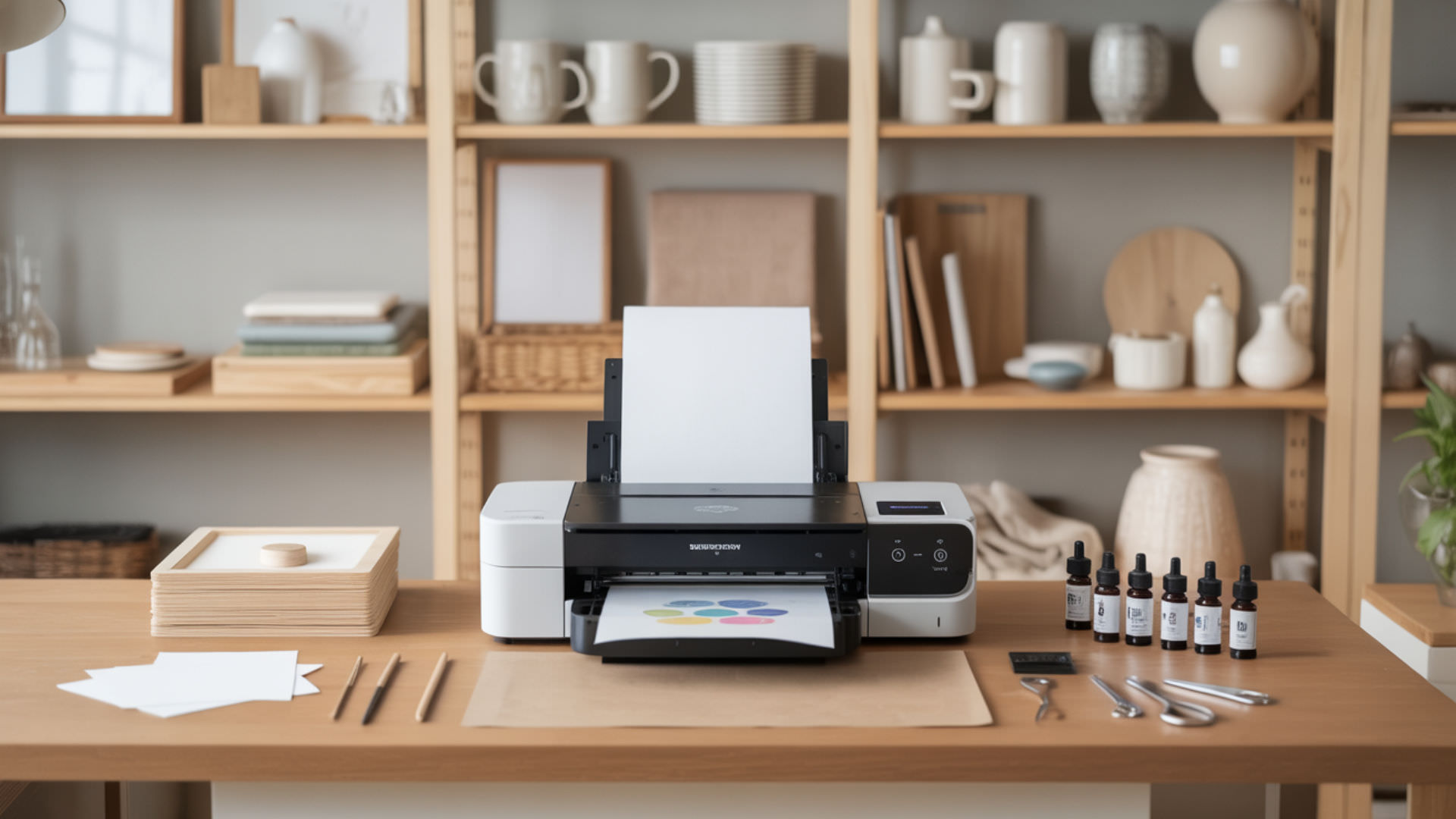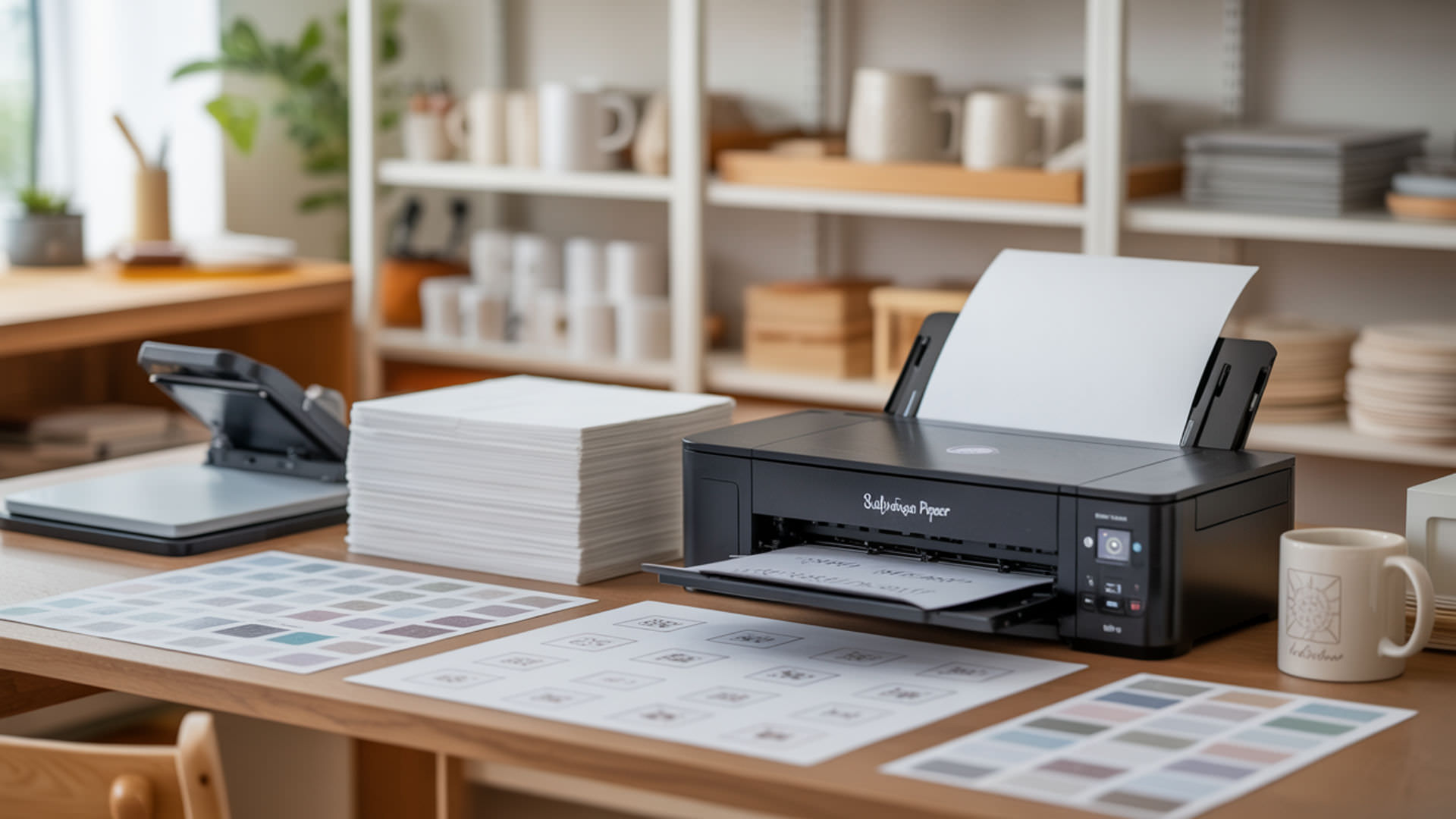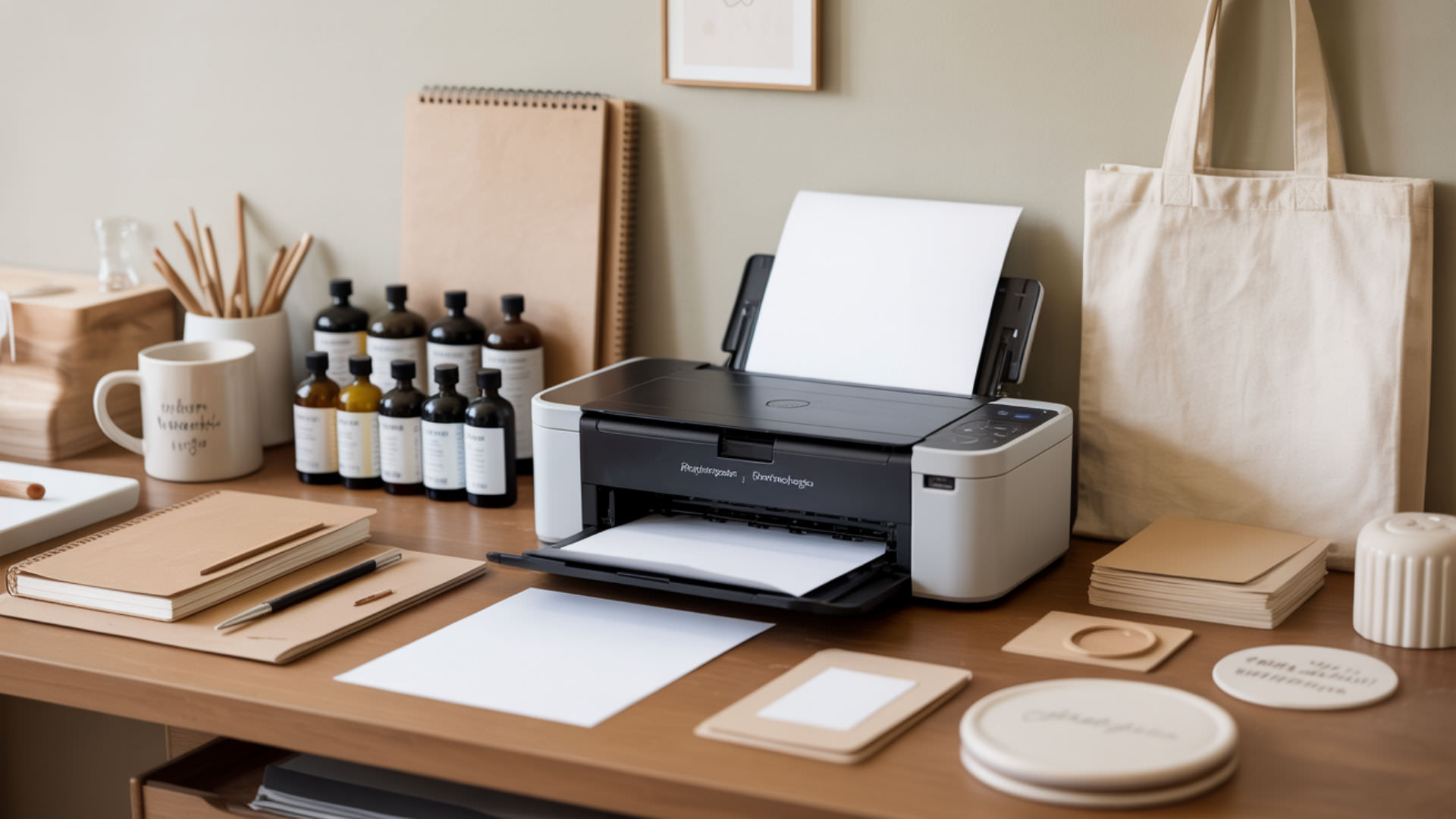Table of Contents
ToggleA sublimation printer stops printing when idle time allows dye-sublimation ink to dry and block the print head nozzles, cutting off ink flow entirely. Dye-sublimation ink dries and thickens faster than standard inkjet formulas when left unused, making sublimation systems particularly vulnerable to extended downtime. Because the print head is where most non-printing issues originate, understanding basic printer components from our guide on how to use a sublimation printer provides essential troubleshooting context.
Key Takeaways
- Nozzles that become fully clogged cause the printer to output blank pages or fail to print entirely.
- Ink lines can develop air bubbles or blockages that prevent ink from reaching the print head assembly.
- A nozzle check is the first diagnostic pattern to run, confirming whether ink is firing from all channels.
Why is my sublimation printer not printing?

Nozzles with severe clogs stop all ink from ejecting, producing blank output or incomplete prints with large missing sections. The pump mechanism provides suction that pulls ink into the print head—if suction fails, ink cannot reach the nozzles regardless of cartridge levels. A dirty or misaligned capping station allows the head to dry out during rest periods, accelerating complete blockages. For detailed unclogging procedures when nozzles are causing non-printing symptoms, see our guide on how to unclog a sublimation printer.
Can clogged printheads stop a sublimation printer from printing?
Disperse dye solidifies when left stagnant inside the print head, forming hardened deposits that completely obstruct ink channels. Dye aggregation occurs when dried particles clump together, creating dense blockages that standard cleaning cycles cannot penetrate. Drying accelerates in low humidity environments below 40% and during idle periods exceeding 1–2 weeks, making complete nozzle failure increasingly likely. Low humidity environments accelerate moisture evaporation from water-based inks, increasing the likelihood of dye thickening and hardened deposits forming inside print head nozzles, especially during extended idle periods. [1]
What other issues can prevent a sublimation printer from printing?
Communication protocol failures through USB or WiFi connections mean print jobs never reach the printer, making it appear completely unresponsive. A stalled print spooler creates queued jobs that prevent new prints from processing, causing the printer to seem dead despite being powered on. Paper feed mechanism problems including misfeeds, jams, or sensor errors can mimic non-printing symptoms when paper fails to advance properly.
Why are my sublimation prints not coming out in the right colors?

Color management settings configured incorrectly in print software cause global color errors affecting every output regardless of design accuracy. An ICC profile mismatch or corruption leads to strange hues because the printer interprets color data using wrong conversion tables. Nozzles with partial clogs in specific CMYK channels cause selective color shifts—blocking magenta produces green-shifted output, while cyan blockages create red-shifted results. For deeper troubleshooting on color management, resolving ICC profile conflicts, and diagnosing clogged nozzles, see our full guide on Sublimation Printer Not Printing Correct Colors.
Dull or incorrect colors caused by clogged nozzles
Missing nozzles appear as gaps in nozzle check patterns and produce faded, washed-out colors in actual prints where affected channels deliver reduced ink volume. Dye-sublimation ink drying inside specific channels causes selective fading—one color may print at 50% intensity while others remain vibrant. Run a nozzle check pattern before troubleshooting color issues to identify exactly which channels require cleaning.
Why is sublimation printing brown instead of black?
Nozzles in the black (K) channel that become clogged force the printer to simulate black using remaining CMY colors, producing muddy brown output instead of true black. This color shift is a classic symptom of single-channel blockage where the printer compensates using composite color mixing. Cleaning the black channel specifically—or reducing press temperature by 10–30°F if over-pressing is the cause—resolves brown-black issues.
Why is sublimation printing green instead of the correct color?
An incorrect ICC profile maps colors improperly during conversion, causing unexpected green shifts when the software misinterprets intended hues. Dye aggregation from partial clogs can also alter color balance—a blocked magenta channel removes red tones from output, shifting colors toward green. Low-quality sublimation ink with substandard black dye formulation may also appear green on final transfers due to weak pigment bonding.
Why is my sublimation print not transferring to the item?
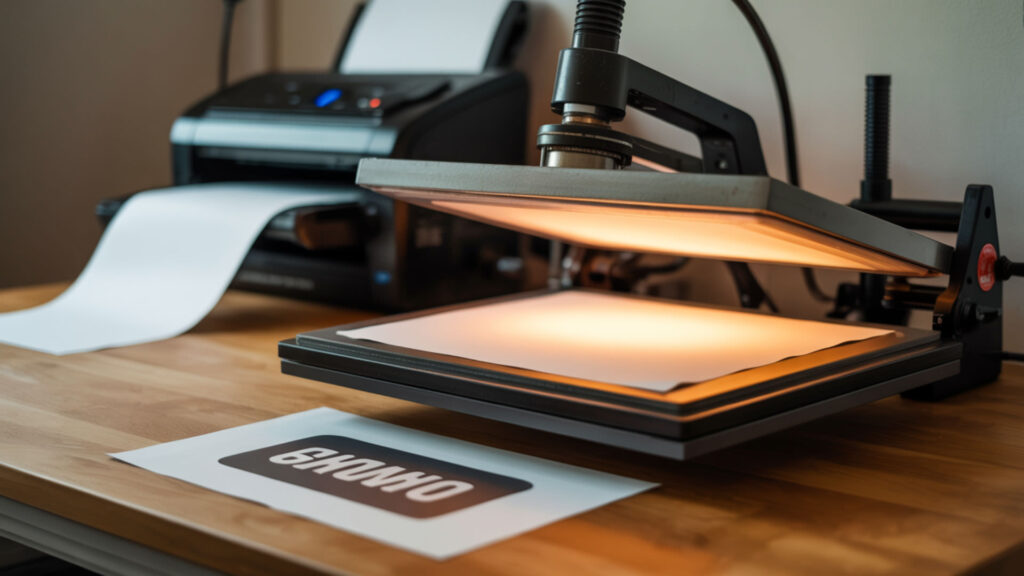
Dye-sublimation ink requires sufficient heat and time to convert from solid to gas phase and infuse into the substrate’s polymer coating. Temperature dependence is critical—incorrect press temperature below 350°F prevents gasification, while excessive heat above 420°F causes burning or premature color shift. Substrates must contain polyester content (65% minimum for fabrics) or poly-coating for the gaseous dye to bond permanently.
Does sublimation require heat to transfer properly?
Disperse dye only activates within a specific temperature range of 350–420°F (175–215°C), where solid ink particles absorb enough energy to skip the liquid phase and become gas. Temperature dependence means too low yields no gas phase transition and zero transfer, while too high causes burning, color degradation, or substrate damage. Most sublimation blanks require 375–400°F for optimal dye gasification and polymer penetration. Temperature-dependent material processes rely on precise heat input, meaning even small deviations outside the optimal range can prevent proper phase transition or cause thermal degradation. [2]
How long should sublimation be pressed?
Dye-sublimation ink needs adequate dwell time—typically 45–60 seconds for most substrates—to fully gasify and penetrate the polymer surface. Drying from over-pressing occurs when excessive time overcooks the ink, causing colors to dull, fade, or shift toward brown tones. Pre-press substrates for 3–5 seconds to remove moisture before applying the transfer, as trapped water creates steam that disrupts ink bonding.
How do you print sublimation step-by-step?

Run a nozzle check before printing to ensure all CMYK channels fire correctly—gaps indicate clogs requiring cleaning before proceeding. Configure color management settings with the correct ICC profile matched to your ink and paper combination for accurate color output. Verify the paper feed mechanism loads sublimation paper correctly with the coated side facing down (printable side toward you). When nozzle check patterns reveal issues, maintenance kits provide the cleaning tools and fluids needed for recovery—see our best sublimation printer maintenance kit guide.
Can you reset a sublimation printer?
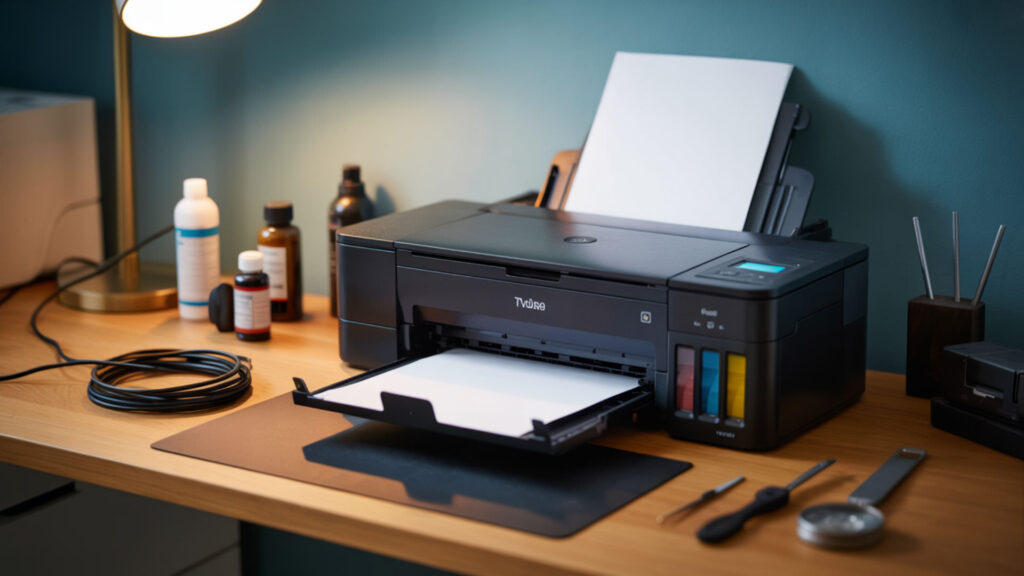
A power cycle clears temporary firmware glitches, print spooler errors, and connection problems that cause non-printing symptoms without any hardware issues present. Power off the printer, unplug for 2–3 minutes, then reconnect and allow full initialization before testing. Communication protocol must re-establish correctly after resets—verify USB or WiFi connection status and reinstall drivers if the printer remains unrecognized.
How can you reset a printer after sublimation ink issues?
Ink lines may need re-priming after severe clogs or extended downtime to refill channels that lost ink continuity during blockage formation. The pump mechanism must pull fresh ink through the entire delivery system to restore complete color output across all CMYK channels. Run 2–3 cleaning cycles followed by nozzle checks after any reset to confirm ink flow has been fully re-established before production printing.
Ready to Fix Your Sublimation Printer?
Troubleshooting a non-printing sublimation printer requires systematic diagnosis—start with nozzle checks, then examine connections, spooler status, and paper feed before assuming hardware failure. The print head should be verified again after completing troubleshooting steps to confirm all channels fire consistently. Nozzles need to demonstrate reliable firing across every CMYK channel before returning to normal production runs.
Frequently Asked Questions
Can color issues happen if printheads are partially clogged?
Partial nozzle clogs cause visible banding, color shifts, and faded output even when the printer continues producing prints. A 30–50% blockage in one channel reduces that color’s intensity proportionally, throwing off the entire CMYK balance. Nozzle check patterns reveal partial clogs as broken or faint lines in affected color rows before they progress to complete channel failure.
Can sublimation ink clog faster than regular printer ink?
Disperse dye in sublimation ink dries faster than pigment or standard dye inks because its water-based carrier evaporates readily at room temperature. Idle time beyond 5–7 days begins forming deposits in sublimation systems, whereas standard inkjet printers may tolerate 2–3 weeks between uses. Weekly printing and 40–60% humidity environments dramatically reduce sublimation-specific clogging risk.
Can sublimation be reapplied if the first press is too light?
Sublimation transfers cannot be reapplied once pressed because the ink has already gasified and bonded with the substrate’s polymer structure during the initial heat cycle. Attempting a second press with the same transfer produces little to no additional color since most dye has already migrated. Print a new transfer and ensure correct temperature (375–400°F) and time (45–60 seconds) settings before pressing again.
How long can sublimation ink sit before causing drying issues?
Disperse dye begins thickening and forming deposits within 5–7 days of idle time under normal humidity conditions. After 2 weeks without printing, partial clogs become likely; after 3–4 weeks, severe blockages requiring manual intervention typically develop. Running weekly test prints or nozzle checks keeps ink flowing and prevents the drying cascade that leads to complete non-printing failures.
What are signs that a printer reset may be needed?
Printer reset is indicated when the device freezes during operation, fails to recognize installed cartridges despite correct installation, or displays persistent error codes that don’t clear after troubleshooting. Jobs stuck in the print queue that cannot be cancelled, unresponsive control panels, and communication failures after driver updates also suggest reset may resolve the issue without hardware repair.
References
- https://www.weather.gov/lmk/humidity
- Kelvin: Introduction. (2026, January 5). NIST. https://www.nist.gov/si-redefinition/kelvin-introduction

